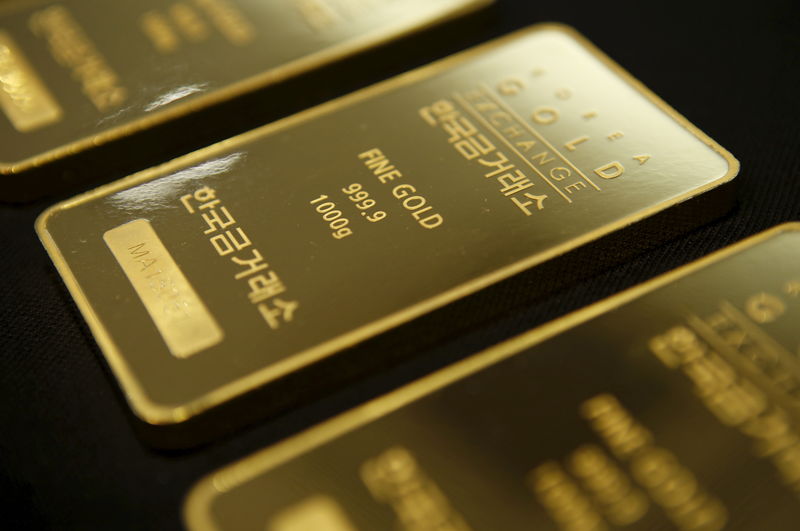Investing.com - Gold traded slightly weaker in Asia on Thursday as investors braced for the Federal Reserve next week and squared positions.
On the Comex division of the New York Mercantile Exchange, gold for December delivery eased 0.13% to $1,165.60 a troy ounce, while silver futures for December delivery dropped 0.22% to $15,675 a troy ounce.
Copper for December delivery rose 0.09% to $2.358 a pound.
Overnight, gold futures fell considerably on Wednesday amid a slightly stronger dollar, as continued weakness in China and the timing of a potential interest rate hike by the Federal Reserve remained in focus.
In overnight trading, the Shanghai Composite Exchange fell 104.65 or 3.06% to 3,320.68, as the aftershocks of soft GDP data from earlier in the week continued to be felt. It marked the sharpest decline in Chinese equities in five weeks.
On Monday, China's National Bureau of Statistics reported that GDP growth grew at 6.9% for the third quarter, representing its slowest pace in more than six years. Analysts expected third quarter GDP to grow at 6.8% for the period. China is the world's largest producer of gold and the world's second-largest consumer of the precious metal behind India.
Investors await next week's Federal Open Market Committee October monetary policy meeting for further hints on whether the U.S. central bank could lift short-term interest rates before the end of the year. While the FOMC is not expected to raise its benchmark Federal Funds Rate at the meeting, it could vote to begin policy normalization at its next meeting on Dec. 15-16.
Without the release of any major economic reports this week, the Federal Reserve will weigh the data from the last month since it met last in mid-September. At the meeting, four members of the FOMC voted to wait until 2016 for lift-off. The labor market added only 142,000 non-farm payrolls in September, while long-term inflation remained soft at 1.3%.
Meanwhile, yields on the U.S. 2-Year have increased moderately since falling to near-three month lows following the Fed's decision. The correlation between fluctuations in gold and the direction of 2-year Treasuries remains near its lowest level since 2011, providing signals that investors are anticipating a rate hike. U.S. 2-year government bonds are highly sensitive to changes in interest rates.
A rate hike is viewed as bearish for gold, which struggles to compete with high-yield bearing assets.
